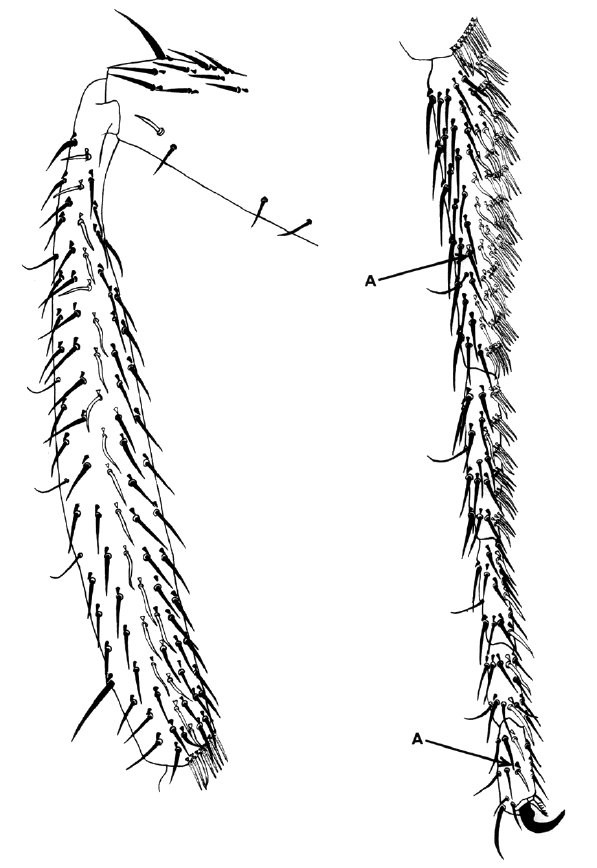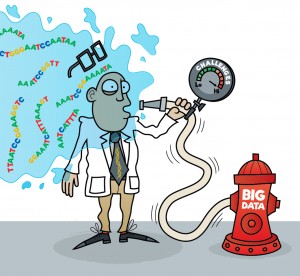I recently learned that the recent earthquakes in Kumamoto, Japan, severely affected the Institute of Molecular Embryology and Genetics (IMEG) – home to a large community of developmental biologists. Fortunately, none of the institute’s staff were seriously injured, but there was significant damage to the building and the research infrastructure and it will take a long time for the institute to recover. With the permission of Ryuichi Nishinakamura, the institute’s Director, I am reposting here extracts from the news bulletins he has been putting out via the institute’s website – where he has been doing a great job of keeping people updated.
I’m sure that many of you will know (or at least know of) some of the researchers at IMEG, and we wanted to spread the word more widely about the situation there – and give people the opportunity to send messages of support. Any comments left below will be forwarded to Ryuichi.
IMEG has a fundraising campaign open for donations to help in their recovery efforts. While the primary aim of this post is not to solicit donations, any assistance that can be offered – financial or otherwise – would obviously be greatly appreciated. Further details on the fundraising efforts can be found here.
You can also see photos from the institute here.
APRIL 19th
The building of the Institute of Molecular Embryology and Genetics (IMEG) at Kumamoto University was severely damaged by the big earthquake on April 14th, 2016. On the early morning of April 16th, another earthquake even bigger than the first, brought devastating damage to our institute. There was no electricity, water, or gas in the entire city. Many people, including myself, evacuated to emergency shelters or stayed in cars for several nights.
I am very relieved to report that no one at our institute, including graduate students, was severely injured. However, the grounds surrounding the building have become rippled, multiple tiles were ripped off the exterior walls, and many cracks have developed in the wake of the earthquakes. I was shocked at first, but the foundation of the building turned out to be well maintained, and the building is unlikely to collapse. In order to avoid injuries from falling objects, general entry to the building is prohibited. Staff members, however, are already in the building working hard toward the recovery of the institute. Although it will take more than a year for the entire recovery, we are confident that we will be able to resume our research activities soon.
Much of the equipment, including the mass spectrometer, the next-generation sequencer, the FACS, and the microscopes, has fallen onto the floor. Because IMEG is one of the members of the MEXT program for Joint Usage/Research Center, many researchers from all over the county have used our facility and received professional support at the core facility, the “Liaison Laboratory Research Promotion Center (LILA)”. This facility has also contributed greatly to our own research activities. Therefore, we are trying to restore all the equipment as early as possible, although the cost may be high.
We were also fortunate to have the supply of electricity, water, and gas remain constant for the Center for Animal Resources and Development (CARD), which is one of the top level mouse facilities in Japan. The mice in this building are alive and safe. The cryopreserved embryos that are stored in the liquid nitrogen tanks in the basement are also unharmed. I am relieved because these mice are also important resources for the scientific community.
APRIL 25th
We will recover the laboratory infrastructures to relaunch research activities by following two steps. First, we will attach the fundamental research instruments firmly to the floors (e.g., several types of benches including clean benches, microscopies, PCs, and incubators). We plan to move some of them from the upper to the lower levels inside the main building to ensure greater safety. Second, we will do our best to repair the advanced instruments (e.g., fluorescence-activated cell sorters [FACS], mass spectrometers, next-generation sequencers, and confocal microscopes) that have provided support for research activities so far in laboratories nationwide in Japan, because we have a mission to return to serving our institute as a Joint Center for Research again. We need time to complete the fixes, as we should wait until the afterquake clusters have passed before bringing technical supports to our institute. As we progress in the preliminary investigation, we face the fact that many instruments are too damaged to be repaired after having fallen to the ground. We tentatively consider that it will take a great deal of time and money to repair the buildings, lab environments, and instruments.
Rather than feeling battered, we are now excited to overcome this difficulty. While we have evacuated students from Kumamoto to their hometowns or other remote locations, the faculty and staff remain in Kumamoto to recover the institute. We start each morning by cleaning the laboratories. Then we meet for lunch to share information and encourage each other while eating bread and rice balls voluntarily provided by the professors. In the afternoon, all staff members separate into groups to carry out the processes. We share information through e-mail and on a whiteboard located in front of the entrance. All the institute’s employees have been making tremendous efforts in the restoration.
This update concluded with a ‘PS’ focussed on the staff:
More than 10 days have passed since the 2016 Kumamoto earthquakes. There were over 850 aftershocks. Some of our staff members still live in their cars because of the high degree of house damage or fear of aftershocks. Families were forced to take refuge in other areas. We cannot take baths or cook because of delays in the restoration of gas. Furthermore, water has not been restored in some districts. Our staff members face physical and mental fatigue. I would like to tell our staff members, please do not overexert yourself. Take on only what you can. Please rest so that you do not feel pushed to your limits, visit a hospital if you need to, or take refuge in a surrounding area. Further, our work prioritizes “safety first,” not “speed.” We have to tackle the problem using a long-term strategy. It is important not to do too much too quickly.
MAY 2nd
In addition to the damage to the buildings, the basic equipment on the upper floors is severely damaged, including the bench, cell culture system, microscope, and computers. Earthquake-proof fixation had been performed but was insufficient; some laboratory devices had fallen from the wall along with the fixation equipment. Although we thought that we had adequately prepared for earthquakes after the Great East Japan Earthquake in 2011, this situation shows that our preparation was not sufficient. It is difficult for us to decide how to use the upper floors in the future.
Our campus has four buildings, including our own, making it the central hub of studies utilizing mice. For example, our research at IMEG on the development of mouse organs and bodies contributes significantly to the iPS research on organ reconstruction. The mouse facility (CARD) contributes to animal studies nationwide by producing, keeping, and storing genetically engineered mice. Animal studies need researchers, animals, and equipment in place to produce good results. Fortunately, no researchers have been lost. The mouse facility building is damaged, but the mice are unharmed and are being kept safe. However, a lot of equipment was damaged. Few of the laboratories at our university are well funded, though we have produced results that can compare to any other research institutes in the world. The secret lies in our sharing scheme. We have shared animal facilities, expensive, cutting-edge machines, and support staff to help us use the environment, which have enabled our small laboratories to work efficiently. These items were the lifelines of the above-mentioned scheme, and they have been damaged. Not only have the facilities in our institute been shared by all of us but also three other buildings, as well as those on the neighboring medical school campus. Additionally, researchers across the nation come here to conduct studies using these instruments because IMEG is a Ministry of Education-rated hub for sharing and joint research institutes. It is detrimental not only to research by Kumamoto University but to that by nationwide researchers that we cannot provide the hub at this moment. We should return to the front line of research as soon as possible.
Unfortunately, many of the manufacturers’ staff members will be delayed in coming to Kumamoto because of aftershocks, and their arrival may be further delayed due to consecutive holidays. The details of the damage sustained by many machines should become clear around the middle to the end of May. The total losses seem to be enormous. It will take between several months to one year to resume our studies owing to the need to negotiate the budget, make repairs, order replacements, conduct bidding, and then allow time for manufacture and delivery. We will do our best to minimize the delay of our studies. Thank you for your continuous support, regardless of whether it is in or out of our institute. In addition to our studies, it is challenging to support foreign students as they return to our school, students whose houses were severely damaged, and students expecting graduation soon. We would appreciate your kind consideration of making a contribution toward rebuilding Kumamoto University’s entire system.
Ryuichi Nishinakamura
 (3 votes)
(3 votes)
 Loading...
Loading...


 (3 votes)
(3 votes) (3 votes)
(3 votes) (5 votes)
(5 votes)

